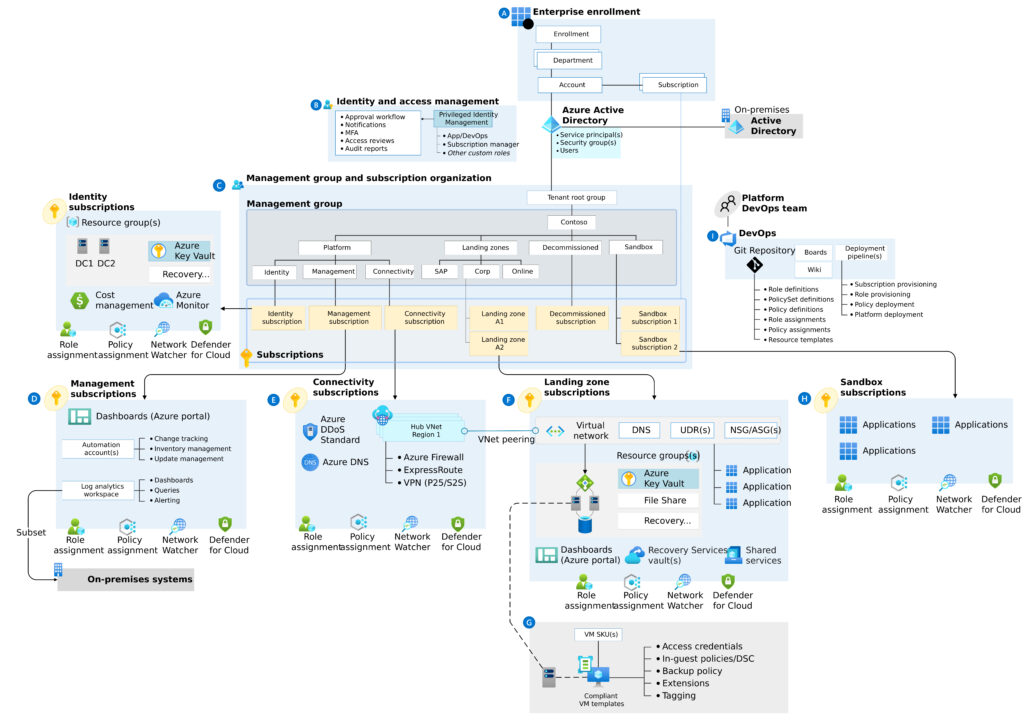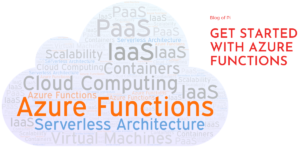Landing zones are an essential part of setting up your cloud infrastructure on Azure. They provide a structured approach to defining and implementing best practices, security, and compliance requirements for your organization. In this blog post, we’ll discuss what landing zones are, why they’re important, and also how to set up a Landing zone in Azure.
What is a Landing Zone?
A landing zone is a foundational environment that provides a consistent set of policies, security, and governance controls for workloads in a specific Azure environment. The landing zone is designed to provide a common foundation that can be used across your organization for the deployment of cloud resources. It’s essentially a blueprint that defines your organization’s cloud infrastructure, including policies, governance, and compliance requirements.

Why is a Landing zone important?
There are several reasons why a landing zone is important. Firstly, it provides a consistent approach to deploying resources in Azure. This consistency helps ensure that all resources are deployed in a manner that meets your organization’s security and compliance requirements. Secondly, it simplifies the management of cloud resources by providing a centralized point of control. Thirdly and most importantly, it helps reduce the risk of misconfiguration or security breaches by enforcing best practices and standards across your organization.
How to set up a landing zone in Azure?
Setting up a landing zone involves several steps. The following steps provide a high-level overview of the process:
- Define your landing zone requirements: The first step in setting up a landing zone is to define your organization’s requirements for the landing zone. This includes defining policies, security, and compliance requirements.
- Design your landing zone architecture: The next step is to design your landing zone architecture. This involves creating a blueprint that defines the structure and components of your landing zone.
- Set up your landing zone infrastructure: Once you’ve designed your landing zone architecture, you can begin setting up your landing zone infrastructure. This includes setting up your Azure subscriptions, virtual networks, and other resources required for your landing zone.
- Implement governance and security controls: Once your infrastructure is set up, you can begin implementing governance and security controls. This includes defining policies and implementing Azure Policy, Azure Security Center, and other tools to enforce your organization’s requirements.
- Deploy your workloads: Once your landing zone is set up, you can begin deploying your workloads. These workloads should be deployed in a manner that meets your organization’s security and compliance requirements.
References
Following are some links that provide additional information on setting up landing zones in Azure:
- Microsoft Azure landing zones – https://docs.microsoft.com/en-us/azure/cloud-adoption-framework/ready/landing-zone/
- Best practices for Azure landing zones – https://docs.microsoft.com/en-us/azure/cloud-adoption-framework/ready/azure-best-practices/landing-zone/
- Azure landing zone architecture examples – https://docs.microsoft.com/en-us/azure/cloud-adoption-framework/ready/azure-best-practices/azure-landing-zone-architecture-examples/
- Azure Policy overview – https://docs.microsoft.com/en-us/azure/governance/policy/overview
- Azure Security Center overview – https://docs.microsoft.com/en-us/azure/security-center/security-center-introduction
These resources can help you deepen your understanding of landing zones in Azure, as well as provide more details on the best practices, policies, and governance controls discussed in the blog post.
Conclusion
A landing zone is a critical component of setting up your cloud infrastructure in Azure. It provides a consistent approach to deploying resources, simplifies management, and helps reduce the risk of security breaches. By following the steps outlined in this blog post, you can set up a landing zone that meets your organization’s requirements and provides a strong foundation for your cloud infrastructure.


